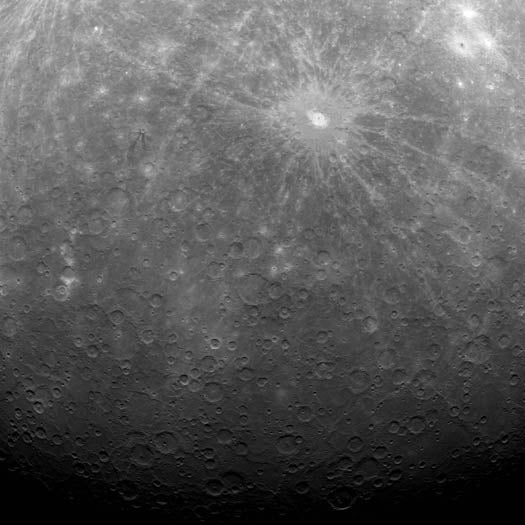Gallery: Messenger Sends Back First-Ever Pictures From Orbit Around Mercury [Updated]
Messenger, meet Mercury. The first image ever obtained from a spacecraft in orbit around Mercury was snapped in the wee...

Messenger, meet Mercury. The first image ever obtained from a spacecraft in orbit around Mercury was snapped in the wee morning hours yesterday and returned to Earth in short order. Consider this shot the first trickle in a flood of data that’s about to begin pouring in from the innermost planet in our solar system.
Click to launch the photo gallery
This image shows a swath of Mercury’s southern hemisphere, an area that has never been thoroughly explored close-up (that prominent white feature is a huge, 50-mile-wide crater named Debussy). Though Mercury is the closest planet to the sun, it is thought water ice might be hiding in areas of permanent shadow here.
That’s just one question the Messenger spacecraft could help astronomers answer in the coming year as it makes multiple passes around the planet in its 12-hour orbit. The data stream coming back will be heavy; in the six hours after snapping the above image, Messenger collected 363 more. In the next three days, 1,185 pics will be beamed back to Earth, and that’s just to complete the commissioning phase for the on-board instruments.
The real science phase begins on April 4, when the mission plan calls for Messenger to begin a 75,000-photo survey of the planet (all counted, there are seven scientific instruments on board collecting various data). So this image is just a teaser, both in terms of the commissioning phase and the overall science mission. More photos of Mercury’s surface will be released later this afternoon.
Update: NASA and company have released a few more Messenger pics as promised, click through the gallery above to see what else Messenger is seeing.

A First Look at Mercury’s Northern Polar Region

Mercury in Color

Debussy’s Rays

An Early Glimpse of Mercury, Annotated